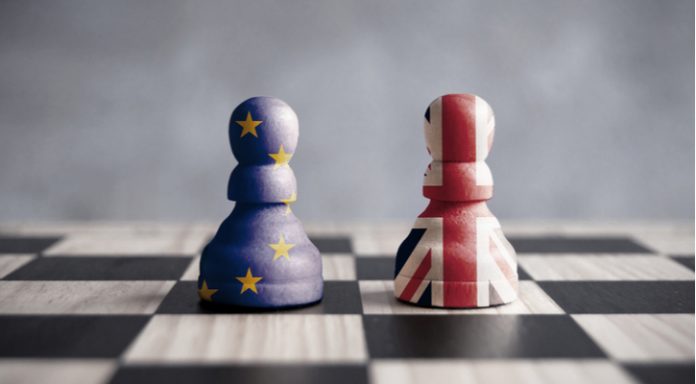The pound trended lower versus the euro on Tuesday. The pound euro exchange rate closed the previous session 0.3% lower at €1.1243. Sterling is heading lower in early trade on Wednesday.
The pound came under pressure in the previous session despite an uplift in UK manufacturing output. The UK manufacturing PMI reached a 4-month high of 48.3, above the 47 that analysts had predicted. This was also an improvement on August’s reading.
The uplift was from firms’ stockpiling ahead of Brexit, an unsustainable means to growth and which failed to drag the sector out of contraction. The level 50 separates expansion from contraction. Brexit uncertainty and slowing global demand continue to negatively impact the sector.
Today investors will continue following Brexit developments. Prime Minister Boris Johnson is set to reveal his final offer to the EU in a bid to unblock the current impasse over the Irish backstop. Early media reports are indicating that the leaked deal has received negative feedback from EU and Irish diplomats to the UK. This is pulling the pound southwards in early trade.
| Why is a “soft” Brexit better for sterling than a “hard” Brexit? |
| A soft Brexit implies anything less than UK’s complete withdrawal from the EU. For example, it could mean the UK retains some form of membership to the European Union single market in exchange for some free movement of people, i.e. immigration. This is considered more positive than a “hard” Brexit, which is a full severance from the EU. The reason “soft” is considered more pound-friendly is because the economic impact would be lower. If there is less negative impact on the economy, foreign investors will continue to invest in the UK. As investment requires local currency, this increased demand for the pound then boosts its value. |
Investors will also look towards the UK construction PMI reading. In August, construction activity declined as new orders dropped at their fastest rate in 10 years. Analysts are expecting the construction sector to remain deep in contraction.
Euro Gains On Dollar Weakness
Despite weak levels of inflation, the value of the euro broadly increased on Tuesday. Consumer prices in the bloc increased just 0.9% year on year in September, down from 1%. This was the fifth straight month that eurozone inflation remained below the European Central Bank’s 2% target. The lacklustre level of inflation weighed on the value of the euro as investors assumed that the ECB could consider cutting interest rates further.
| Why do interest rate cuts drag on a currency’s value? |
| Interest rates are key to understanding exchange rate movements. Those who have large sums of money to invest want the highest return on their investments. Lower interest rate environments tend to offer lower yields. So, if the interest rate or at least the interest rate expectation of a country is relatively lower compared to another, then foreign investors look to pull their capital out and invest elsewhere. Large corporations and investors sell out of local currency to invest elsewhere. More local currency is available as the demand of that currency declines, dragging the value lower. |
By the end of the session the euro had recovered losses, thanks to a weaker dollar. The euro trades inversely to the dollar, so when the dollar drops, the euro gains. The dollar experienced sharp losses following from weak manufacturing numbers, which fuelled fears that the US — China trade war was negatively impacting on the US economy.
Today there is no high importance eurozone data. Investors will look ahead to Thursday’s retail sales and PMI figures.
| What do these figures mean? |
| When measuring the value of a pair of currencies, one set equals 1 unit and the other shows the current equivalent. As the market moves, the amount will vary from minute to minute.
For example, it could be written: 1 GBP = 1.13990 EUR Here, £1 is equivalent to approximately €1.14. This specifically measures the pound’s worth against the euro. If the euro amount increases in this pairing, it’s positive for the pound . Or, if you were looking at it the other way around: 1 EUR = 0.87271 GBP In this example, €1 is equivalent to approximately £0.87. This measures the euro’s worth versus the British pound. If the sterling number gets larger, it’s good news for the euro. |
This publication is provided as general information only and is not intended as an exhaustive treatment of its subject. TransferWise Inc. and its affiliates (“we” or “us”) expressly disclaim any contractual or fiduciary relationship with you on the basis of the content of this publication, and you may not rely thereon for any purpose. You should consult with qualified professionals or specialists before taking, or refraining from, any action on the basis of the content in this publication. The information in this publication does not constitute legal, tax, investment or other professional advice from us. We make no representations, warranties or guarantees, whether express or implied, that the content in the publication is accurate, complete or up to date, and DISCLAIM ANY IMPLIED WARRANTIES OF MERCHANTABILITY OR FITNESS FOR A PARTICULAR PURPOSE.





